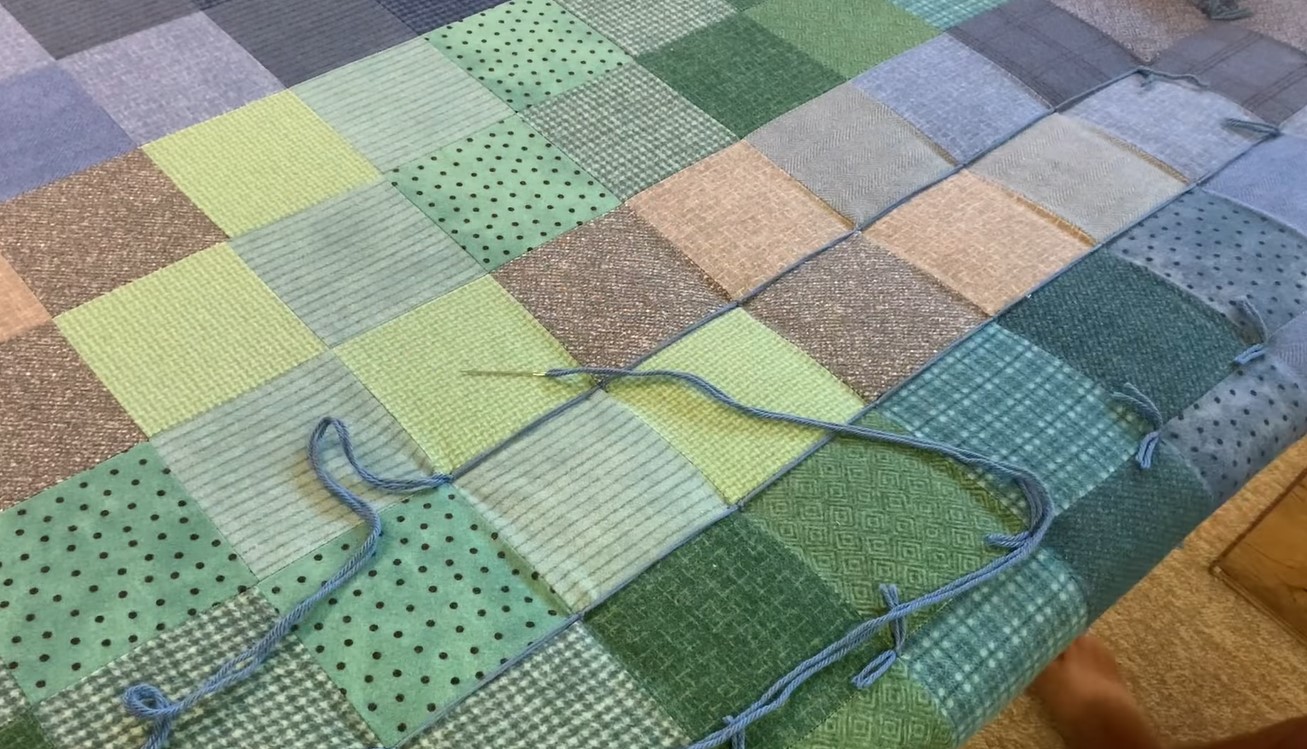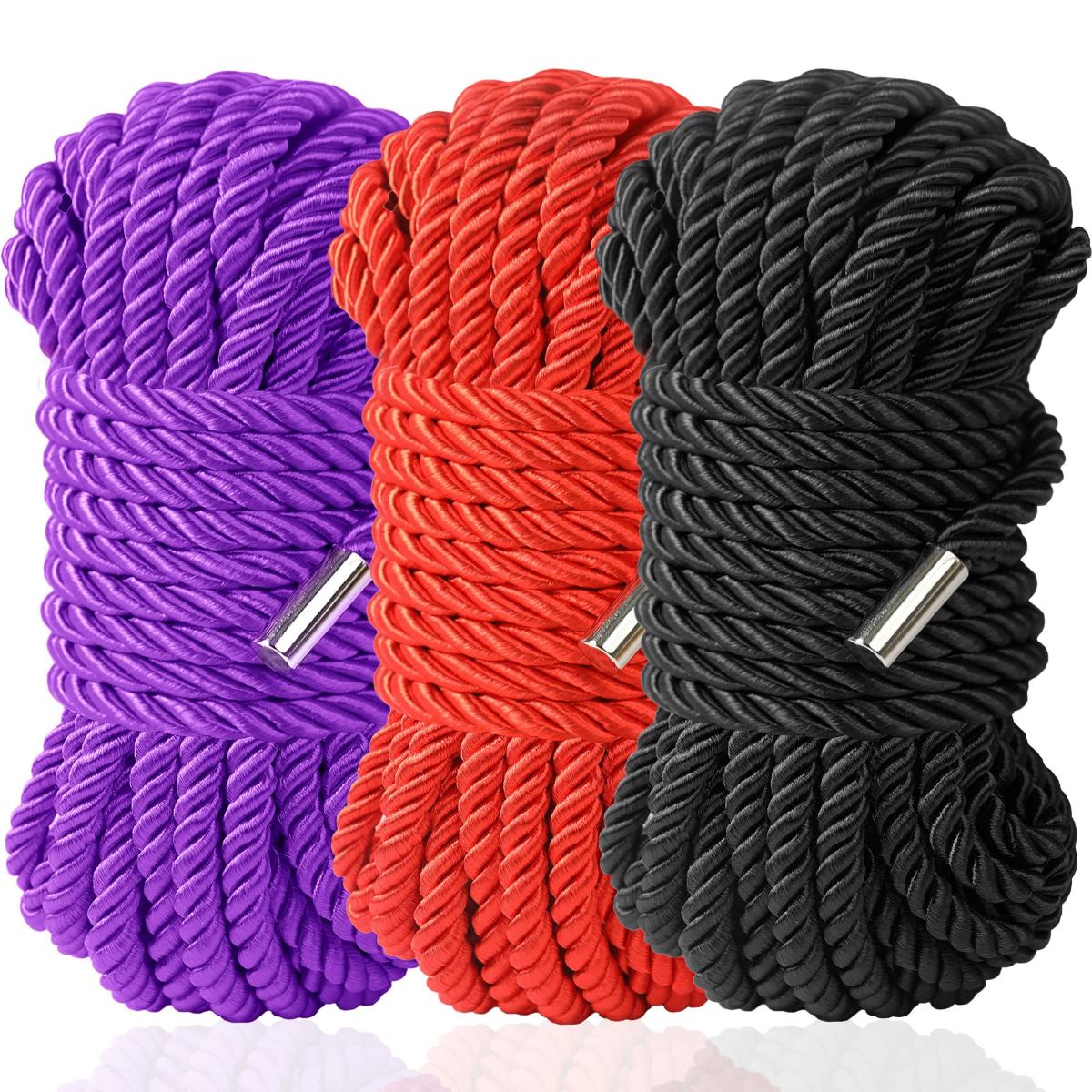Home>Furniture>Outdoor Furniture>How To Tie A Hammock Rope


Outdoor Furniture
How To Tie A Hammock Rope
Modified: March 16, 2024
Learn the best techniques for tying a hammock rope and enhance your outdoor furniture experience. Discover tips and tricks for securing your hammock and achieving maximum relaxation.
(Many of the links in this article redirect to a specific reviewed product. Your purchase of these products through affiliate links helps to generate commission for Storables.com, at no extra cost. Learn more)
Introduction
When it comes to outdoor relaxation, few things can beat the comfort and serenity of lying in a hammock. Whether you’re enjoying a lazy afternoon in your backyard or planning a camping trip, having the right knowledge and skills to tie a hammock rope is essential for a safe and enjoyable experience.
In this article, we will guide you through the step-by-step process of how to tie a hammock rope. By following these instructions, you’ll be able to set up your hammock securely between two trees or other sturdy anchors.
Before we dive into the details, let’s make sure you have all the necessary tools and materials ready.
Key Takeaways:
- Choose a strong, weather-resistant rope for your hammock, and follow the steps to secure it between sturdy trees. Test for stability and make adjustments for a safe and comfortable outdoor experience.
- Always inspect your equipment, choose reliable anchor points, and practice responsible hammocking to ensure safety and minimize impact on the environment. Enjoy the tranquility of nature with a securely tied hammock.
Read more: How To Tie Aerial Hammock
Tools and Materials Needed
Before you begin tying a hammock rope, gather the following tools and materials:
- Hammock: Choose a hammock that suits your preferences and needs. Look for a durable and comfortable hammock made of high-quality fabric or mesh.
- Rope: Select a strong and reliable rope that can support the weight of your hammock and provide secure anchoring. Nylon or polyester ropes are commonly used for this purpose.
- Carabiners: These sturdy and lightweight metal clips are used to attach the ropes to the hammock. Make sure you have at least two carabiners that can safely bear the weight of your hammock.
- Tree Protectors: To prevent damage to the trees and minimize the impact on the environment, consider using tree protectors. These wide straps or pieces of fabric are wrapped around the tree trunk before attaching the hammock ropes.
- Measuring Tape: Having a measuring tape handy will help ensure that the distance between the trees or anchor points is suitable for your hammock.
- Scissors/Knife: You may need these tools for cutting the ropes to the desired length or making any adjustments during the setup process.
Once you have gathered these tools and materials, you’re ready to move on to the next steps and tie your hammock rope.
Step 1: Choosing the Right Rope
Choosing the right rope for your hammock is crucial for ensuring safety and stability. Here are some factors to consider when selecting a rope:
- Strength: Look for a rope with a high tensile strength that can support the weight capacity of your hammock and the occupants. Check the manufacturer’s recommendations for the appropriate weight limit.
- Material: Nylon and polyester are popular choices for hammock ropes due to their durability and weather resistance. These materials have a good balance of strength, flexibility, and resistance to UV rays.
- Length: The length of the rope depends on the distance between the trees or anchor points. Measure this distance accurately and add a few extra feet for tying knots and adjustments.
- Diameter: The diameter of the rope affects its strength and comfort. Thicker ropes provide better support but may be less comfortable to lie on. Consider a diameter between 0.25 inches to 0.5 inches for most hammocks.
- Static or Dynamic: Static ropes are designed for low-stretch applications, while dynamic ropes have more stretch and are suitable for situations where there might be sudden shocks or falls. For hammocks, static ropes are generally recommended.
Once you have chosen the right rope, it’s time to move on to preparing your hammock for setup.
Step 2: Preparing the Hammock
Before you can tie your hammock rope, it’s essential to properly prepare your hammock. Follow these steps:
- Unfold the hammock: Find a spacious area where you can lay out your hammock. Unfold it completely, ensuring that there are no tangles or twists in the fabric.
- Inspect the hammock: Check for any signs of damage, such as tears or worn-out straps. It’s crucial to identify potential weak points before setting up your hammock.
- Attach the carabiners: Locate the attachment points on the ends of your hammock. These are usually loops or rings. Open the carabiners and securely clip them onto the attachment points.
- Adjust the suspension: If your hammock has adjustable suspension straps, make sure they are properly adjusted to your desired length. This will determine the height and tension of your hammock once it’s set up.
By preparing your hammock correctly, you’ll ensure a hassle-free setup process and a comfortable experience once you’re ready to relax.
Step 3: Securing the Rope to a Tree
Securing the ropes to sturdy anchor points, such as trees, is crucial for the stability and safety of your hammock. Follow these steps to secure the ropes:
- Select suitable trees: Look for two healthy, robust trees that are spaced apart at a distance that matches the length of your hammock. Make sure the trees are strong enough to support the weight and provide a secure anchor.
- Wrap tree protectors: To protect the tree bark and minimize damage, wrap tree protectors or wide straps around the trunks of the selected trees. These straps will distribute the weight of the hammock evenly and prevent any potential harm to the trees.
- Wrap the rope around the tree: Start by wrapping the rope around the tree trunk, near the desired height of your hammock. Ensure that the rope is tight and secure against the tree bark.
- Create a loop: Once the rope is wrapped around the tree, create a loop by folding the rope back in on itself. The loop should be at a height that aligns with the other side of the hammock anchor point.
- Tighten the loop with a knot: Pull the free end of the rope through the loop and tighten it to create a secure knot. You can use a simple knot like a square knot or a double overhand knot.
- Repeat the process for the other tree: Repeat steps 3 to 5 on the opposite tree, making sure the distance and height from the ground match those of the first side.
By properly securing the ropes to the trees, you will create a stable and safe foundation for your hammock.
When tying a hammock rope, use a secure knot like the bowline or figure-eight knot to ensure the hammock stays in place and supports your weight safely.
Read also: 8 Best Hammock Rope For 2025
Step 4: Tying a Basic Knot
Once the ropes are securely attached to the trees, it’s time to tie a basic knot that will hold your hammock in place. Follow these steps to tie a simple and reliable knot:
- Choose a knot: There are several knot options available, but one of the most common and effective knots for hammocks is the “Lark’s Head” knot. This knot allows easy adjustment of the height and tension of your hammock.
- Start with one rope: Select one of the ropes attached to a tree and create a loop by folding it back onto itself.
- Pass the loop through the carabiner: Take the loop and pass it through the carabiner attached to the end of the hammock. Ensure that the loop is securely held by the carabiner.
- Repeat for the other rope: Repeat steps 2 and 3 for the other rope attached to the opposite tree.
- Adjust the knot: Once both ropes are passed through the carabiners, you can adjust the height and tension of your hammock by sliding the knot up or down the ropes. Find the desired position and ensure that both sides are even.
- Test the stability: Gently sit or lie in the hammock to test its stability and make any necessary adjustments to the knot and rope tension.
By tying a basic knot, you’ll be able to securely attach your hammock to the ropes and enjoy a safe and comfortable experience.
Step 5: Testing the Hammock
Now that your hammock is securely set up, it’s important to test its stability and ensure everything is in proper working order. Follow these steps to test your hammock:
- Sit in the hammock: Carefully sit in the center of the hammock to test its weight-bearing capacity. Make sure your weight is evenly distributed and that the hammock feels secure.
- Check for body clearance: While sitting in the hammock, check for optimal body clearance. Your bottom should be slightly off the ground, allowing for a comfortable reclining position.
- Swing gently: Begin gently swinging back and forth in the hammock to test its stability and the strength of the ropes. Pay attention to any excessive swinging or movements that may indicate an insecure setup.
- Assess the anchor points: Inspect the trees and the ropes’ attachment points for any signs of stress or slippage. Ensure that the tree protectors are holding securely, and the knots are tight.
- Make necessary adjustments: If you notice any issues during the testing phase, make the necessary adjustments to the knot, rope tension, or tree anchor points. Ensure that the hammock is stable and comfortable before continuing.
By testing your hammock, you can address any potential safety concerns and make any adjustments needed to ensure a secure and relaxing experience.
Step 6: Adjusting the Height and Tension
Adjusting the height and tension of your hammock is an important step to make it comfortable and to suit your preferences. Follow these steps to adjust the height and tension:
- Determine your desired height: Consider how high off the ground you want your hammock to be. This will depend on personal preference, ease of entry and exit, and the environment you’re in.
- Adjust the ropes: If your hammock has adjustable suspension straps, you can easily change the height by loosening or tightening the straps. Shorten the straps to raise the hammock or lengthen them to lower it.
- Test the height: Sit or lie in the hammock to check if the height feels comfortable. If necessary, make further adjustments to achieve the desired position.
- Check the tension: While in the hammock, assess the tension of the ropes. It should be firm enough to provide support and prevent excessive sagging but not so tight that it becomes uncomfortable.
- Make tension adjustments: If the tension is too loose, you can tighten it by tying knots closer to the tree. If it’s too tight, loosen the tension by moving the knots away from the tree.
- Re-test and fine-tune: After making adjustments, test the height and tension again to ensure that the hammock feels comfortable and secure. Continue to make small adjustments until you are satisfied.
By taking the time to adjust the height and tension of your hammock, you can optimize your comfort and create the ideal relaxation spot.
Step 7: Extra Tips and Safety Precautions
While tying a hammock rope is relatively straightforward, it’s essential to follow some extra tips and safety precautions to ensure a safe and enjoyable experience. Consider the following:
- Inspect your equipment: Regularly inspect your hammock, ropes, carabiners, and tree protectors for any signs of wear and tear. Replace any damaged or weakened components to maintain safety.
- Choose sturdy anchor points: Select strong and healthy trees or other reliable anchor points. Avoid using weak or dead trees that may pose a risk of falling.
- Consider weight capacity: Always check the weight capacity of your hammock and ensure that it can safely support you and any other intended occupants.
- Keep a safe distance: Make sure there is sufficient space between your hammock and any surrounding obstacles, such as walls, furniture, or sharp objects.
- Avoid excessive swinging: While it can be tempting to swing vigorously in a hammock, excessive swinging may put strain on the ropes and increase the risk of accidents. Use gentle movements and avoid sharp swings.
- Supervise children: If children will be using the hammock, supervise them at all times and educate them about proper hammock usage to prevent any accidents.
- Use caution in adverse weather: Take caution when using a hammock in extreme weather conditions such as high winds or storms. Consider taking it down or seeking shelter to avoid any potential hazards.
- Practice responsible hammocking: When enjoying nature, practice Leave No Trace principles by avoiding damage to trees, vegetation, or surrounding areas. Minimize your impact on the environment.
By following these additional tips and safety precautions, you can ensure a safe and enjoyable hammocking experience for yourself and others.
Read more: How To Tie A Non-Slip Loop Knot With Rope
Conclusion
Tying a hammock rope is an essential skill for any outdoor enthusiast looking to relax and unwind in nature. By following the steps outlined in this article, you can securely and confidently set up your hammock between two anchor points.
Starting with choosing the right rope and preparing your hammock, you’ll be able to create a stable foundation. Securing the ropes to suitable trees using proper knots and adjusting the height and tension ensures comfort and safety.
It’s important to remember additional tips and safety precautions, such as inspecting your equipment, choosing sturdy anchor points, and practicing responsible hammocking. By taking these precautions, you can prevent accidents and minimize your impact on the environment.
Now that you have the knowledge and skills to tie a hammock rope, it’s time to get outside, set up your hammock, and experience the ultimate relaxation in nature. So grab your gear, find the perfect spot, and enjoy the blissful tranquility of a hammock.
Frequently Asked Questions about How To Tie A Hammock Rope
Was this page helpful?
At Storables.com, we guarantee accurate and reliable information. Our content, validated by Expert Board Contributors, is crafted following stringent Editorial Policies. We're committed to providing you with well-researched, expert-backed insights for all your informational needs.














0 thoughts on “How To Tie A Hammock Rope”